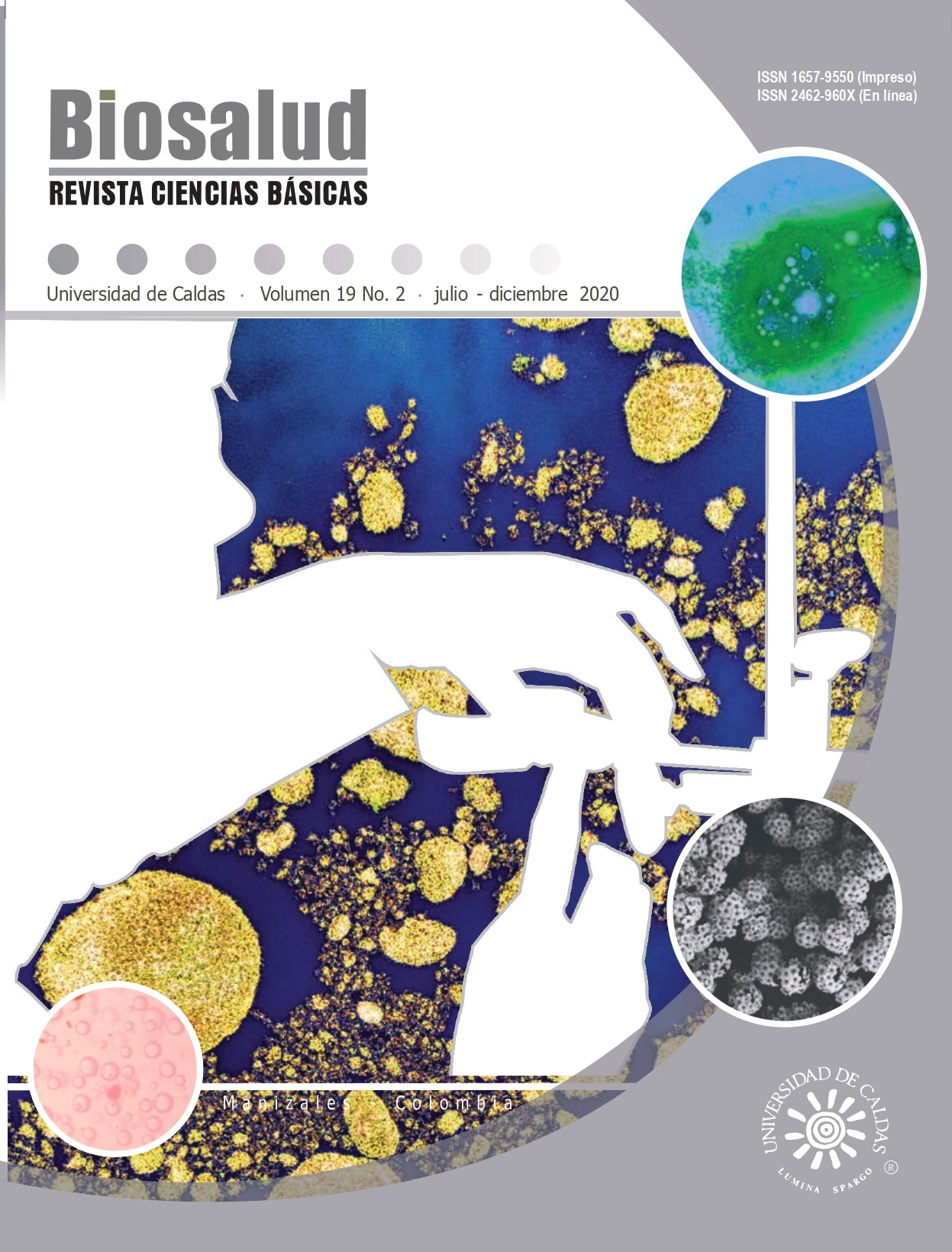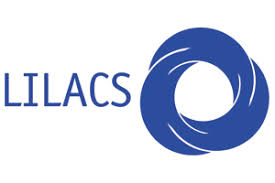Autores/as
Resumen
Introducción: El asma es la enfermedad pulmonar crónica infantil más prevalente en el mundo, en la que influyen factores genéticos y ambientales como la polución, infecciones virales y el ejercicio. Este último a su vez, puede disminuir y controlar síntomas en estos niños. Sin embargo, los niños con asma suelen limitar su actividad física por temor a presentar exacerbaciones. Objetivo: Describir los beneficios de la actividad física como parte del tratamiento complementario del asma infantil. Metodología: Se realizo una búsqueda en la web en diferentes bases de datos de artículos científicos (PubMed, Scielo, Elsevier). Se tuvieron en cuenta artículos completos y resúmenes originales, de revisión y ensayos clínicos. Se analizaron los efectos de la actividad física en el asma infantil y recomendaciones para su adecuada ejecución en estos niños. Resultados: El asma inducida por ejercicio se presenta en niños con o sin asma. La actividad física en ambientes fríos y secos o con alta concentración de alergenos exacerba el desarrollo de síntomas. Sin embargo, cuando ésta se realiza en ambientes adecuados y de manera organizada permite muchos beneficios como efectos antinflamatorios y mejores resultados en la función pulmonar que traduce en menor número y severidad de síntomas, haciendo parte fundamental del tratamiento integral de estos niños. Conclusión: La actividad física, a pesar de desencadenar síntomas, no debe limitarse en niños con asma, ya que el juego y el ejercicio facilitan en ellos su desarrollo físico, emocional y social. Su ejecución organizada en ambientes con adecuada oxigenación y poca exposición a alergenos permitirá controlar y disminuir la frecuencia y la severidad de síntomas en estos niños.
Citas
2. Patel SJ, Teach SJ. Asthma. Pediatr Rev. 2019 Nov 1;40(11):549–67. DOI:
3. Reddel H, Bacharier L, Bateman E, Bonini M, Bourdin A, Brightling C, et al. Global Strategy for Asthma Management and Prevention 2024 [Internet]. Updated 2024; 2024 [cited 2024 Jun 2]. Available from: https://ginasthma.org/wp-content/uploads/2024/05/GINA-2024-Strategy-Report-24_05_22_WMS.pdf
4. Reddel HK, Taylor DR, Bateman ED, Boulet LP, Boushey HA, Busse WW, et al. An Official American Thoracic Society/European Respiratory Society Statement: Asthma Control and Exacerbations. Am J Respir Crit Care Med. 2009 Jul;180(1):59–99. DOI: 10.1164/rccm.200801-060ST.
5. Ministerio de salud y protección social. Controla el asma, disfruta la vida. Boletín de Prensa No 054 de 2018. 2018 Apr 28; 6. Miranda M,, Hoyos S. Prevalencia de asma infantil en la ciudad de Cartagena. Alerg Asma Inmunol Pediatr. 2014;23(2):39–42.
7. Klain A, Giovannini M, Pecoraro L, Barni S, Mori F, Liotti L, et al. Exercise-induced bronchoconstriction, allergy and sports in children. Ital J Pediatr. 2024 Mar 13;50(1):47.DOI:10.1186/s13052-024-01594-0.
8. Aggarwal B, Mulgirigama A, Berend N. Exercise-induced bronchoconstriction: prevalence, pathophysiology, patient impact, diagnosis and management. NPJ Prim Care Respir Med.2018 Dec 14;28(1):31–8. DOI:10.1038/s41533-018-0098-2.
9. de Aguiar KB, Anzolin M, Zhang L. Global prevalence of exerciseinduced bronchoconstriction in childhood: A meta analysis. Pediatr Pulmonol. 2018 Apr 24;53(4):412–25. DOI:10.1002/ppul.23951.
10. Parsons JP, Hallstrand TS, Mastronarde JG, Kaminsky DA, Rundell KW, Hull JH, et al. An Official American Thoracic Society Clinical Practice Guideline: Exercise-induced Bronchoconstriction.Am J Respir Crit Care Med. 2013 May;187(9):1016–27. DOI:10.1164/rccm.201303-0437TH.
11. Gray WN, Janicke DM, Ingerski LM, Silverstein JH. The Impact of Peer Victimization, Parent Distress and Child Depression on Barrier Formation and Physical Activity in Overweight Youth. Journal of Developmental & Behavioral Pediatrics. 2008 Feb;29(1):26–33. DOI:10.1097/DBP.0b013e31815dda74.
12. Abdelbasset WK, Alsubaie SF, Tantawy SA, Abo Elyazed TI, Kamel DM. Evaluating pulmonary function, aerobic capacity, and pediatric quality of life following a 10-week aerobic exercise training in school-aged asthmatics: a randomized controlled trial. Patient Prefer Adherence. 2018 Jun; Volume 12:1015–23. DOI:10.2147/PPA.S159622.
13. Côté A, Turmel J, Boulet LP. Exercise and Asthma. Semin Respir Crit Care Med. 2018 Feb 10;39(01):019–28. DOI:
14. Schiwe D, Heinzmann-Filho JP, Schindel CS, Gheller MF, Campos NE, Santos G, et al.Rendimiento diagnóstico de la pregunta concerniente a la actividad física del cuestionario GINA para la detección de asma y broncoconstricción inducidas por el ejercicio. An Pediatr (Engl Ed). 2021 Jul;95(1):40–7. DOI: 10.1016/j.anpedi.2020.06.031.
15. Francisco C de O, Bhatawadekar SA, Babineau J, Reid WD, Yadollahi A. Effects of physical exercise training on nocturnal symptoms in asthma: Systematic review. PLoS One. 2018 Oct 22;13(10):1–18.DOI:
16. Getch YQ, Neuharth-Pritchett S, Schilling EJ. Asthma and the Public School Teacher: A Two State Study. Pediatr Allergy Immunol Pulmonol. 2019 Sep 1;32(3):109–16. DOI:10.1089/ped.2019.1041.
17. Vaccaro JA, Niego J, Huffman FG. Dietary factors, body weight, and screen time in U.S.children with and without asthma. Children’s Health Care. 2016 Jan 2;45(1):22–38.
18. Leinaar E, Alamian A, Wang L. A systematic review of the relationship between asthma, overweight, and the effects of physical activity in youth. Ann Epidemiol. 2016 Jul; 26 (7): 504-510. e6. DOI: 10.1016/j.annepidem.2016.06.002.
19. Eves ND, Davidson WJ. Evidence-based risk assessment and recommendations for physical activity clearance: respiratory disease 1 This paper is one of a selection of papers published in the Special Issue entitled Evidence-based risk assessment and recommendations for physical activity clearance and has undergone the Journal’s usual peer-review process. Applied Physiology, Nutrition, and Metabolism. 2011 Jul;36(S1): S80–100. DOI:
20. Bull FC, Al-Ansari SS, Biddle S, Borodulin K, Buman MP, Cardon G, et al. World Health Organization 2020 guidelines on physical activity and sedentary behaviour. Br J Sports Med.2020 Dec;54(24):1451–62. DOI:10.1136/bjsports-2020-102955.
21. Privitera S, Privitera A. Physical exercise in asthma adolescents: a concept review. Multidiscip Respir Med. 2023 Sep 1;18. DOI:10.4081/mrm.2023.924.
22. Brons A, Braam K, Timmerman A, Broekema A, Visser B, van Ewijk B, et al. Promoting Factors for Physical Activity in Children with Asthma Explored through Concept Mapping. Int J Environ Res Public Health. 2019 Nov 13;16(22):4467. DOI:10.3390/ijerph16224467.
23. Rodríguez-Nuñez I, Monsalve-Campos K, Bretti MJ, Otzen T, Zenteno D. La rehabilitación respiratoria infantil a la luz de la investigación cualitativa: Aquello que los números no pueden mostrar. Andes Pediatrica. 2023 Jun 15;94(3):392. DOI:
24. Kornblit A, Cain A, Bauman LJ, Brown NM, Reznik M. Parental Perspectives of Barriers to Physical Activity in Urban Schoolchildren With Asthma. Acad Pediatr. 2018 Apr;18(3):310–6.DOI:10.1016/j.acap.2017.12.011.
25. Jago R, Searle A, Henderson AJ, Turner KM. Designing a physical activity intervention for children with asthma: a qualitative study of the views of healthcare professionals, parents and children with asthma. BMJ Open. 2017 Mar 24;7(3):e014020. DOI:10.1136/bmjopen-2016-014020.
26. Qian K, Xu H, Chen Z, Zheng Y. Advances in pulmonary rehabilitation for children with bronchial asthma. Journal of Zhejiang University (Medical Sciences). 2023 Aug 1;52(4):518–25.DOI:10.3724/zdxbyxb-2023-0081.
27. Lang JE. The impact of exercise on asthma. Curr Opin Allergy Clin Immunol. 2019 Apr;19(2):118–25. DOI:10.1097/ACI.0000000000000510.
28. Knibb RC, Alviani C, Garriga-Baraut T, Mortz CG, Vazquez-Ortiz M, Angier E, et al. The effectiveness of interventions to improve self-management for adolescents and young adults with allergic conditions: A systematic review. Allergy. 2020 Aug 27;75(8):1881–98. DOI:10.1111/all.14269.
29. Tong X, Zhang X, Wang M, Wang Z, Dong F, Gong E, et al. Non-pharmacological interventions for asthma prevention and management across the life course: Umbrella review. Clin Transl Allergy. 2024 Mar 29;14(3). DOI:10.1002/clt2.12344.
30. Kippelen P, Anderson SD, Hallstrand TS. Mechanisms and Biomarkers of Exercise-Induced Bronchoconstriction. Immunol Allergy Clin North Am. 2018 May;38(2):165–82. DOI:10.1016/j.iac.2018.01.008.
31. Albuquerque Rodrigues Filho E de, Rizzo JÂ, Gonçalves AV, Correia Junior MA de V, Sarinho ESC, Medeiros D. Exercise-induced bronchospasm in children and adolescents with allergic rhinitis by treadmill and hyperventilation challenges. Respir Med. 2018 May;138:102–6. DOI:
32. Carlsen KH, Hem E, Stensrud T. Asthma in adolescent athletes. Br J Sports Med. 2011 Dec 1;45(16):1266–71. DOI:10.1136/bjsports-2011-090591.
33. Seys SF, Hox V, Van Gerven L, Dilissen E, Marijsse G, Peeters E, et al. Damage-associated molecular pattern and innate cytokine release in the airways of competitive swimmers. Allergy. 2015 Feb;70(2):187–94. DOI:
34. Weiler JM, Brannan JD, Randolph CC, Hallstrand TS, Parsons J, Silvers W, et al. Exerciseinduced bronchoconstriction update—2016. Journal of Allergy and Clinical Immunology.2016 Nov;138(5):1292-1295.e36. DOI:
35. Bonini M, Silvers W. Exercise-Induced Bronchoconstriction. Immunol Allergy Clin North Am.2018 May;38(2):205–14. DOI:10.1016/j.iac.2018.01.007.
36. Klain A, Giovannini M, Pecoraro L, Barni S, Mori F, Liotti L, et al. Exercise-induced bronchoconstriction, allergy and sports in children. Ital J Pediatr. 2024 Mar 13;50(1):47.DOI:10.1186/s13052-024-01594-0.
37. Anderson SD, Kippelen P. A proposal to account for the stimulus, the mechanism, and the mediators released in exercise-induced bronchoconstriction. Frontiers in Allergy. 2023 Nov 6;4. DOI:
38. Grässler B, Thielmann B, Böckelmann I, Hökelmann A. Effects of Different Exercise Interventions on Cardiac Autonomic Control and Secondary Health Factors in Middle-Aged Adults: A Systematic Review. J Cardiovasc Dev Dis. 2021 Aug 5;8(8):94. DOI:10.3390/jcdd8080094.
39. Cox MA, Bassi C, Saunders ME, Nechanitzky R, Morgado Palacin I, Zheng C, et al. Beyond neurotransmission: acetylcholine in immunity and inflammation. J Intern Med. 2020 Feb 3;287(2):120–33. DOI:10.1111/joim.13006.
40. Jayasinghe H, Kopsaftis Z, Carson K. Asthma Bronchiale and Exercise-Induced Bronchoconstriction. Respiration. 2015;89(6):505–12. DOI:10.1159/000433559.
41. Jackson AR, Hull JH, Hopker JG, Fletcher H, Gowers W, Birring SS, et al. The impact of a heat and moisture exchange mask on respiratory symptoms and airway response to exercise in asthma. ERJ Open Res. 2020 Apr 22;6(2):00271–2019. DOI:
42. GINA. https://ginasthma.org/wp-content/uploads/2022/05/GINA-Main-Report-2022-FINAL-22-05-03-WMS.pdf. 2022. Global Strategy for asthma manegement and Prevention.
43. Jordan KA, Mackintosh KA, Davies GA, Griffiths CJ, Lewis PD, McNarry MA. Perceptions surrounding the possible interaction between physical activity, pollution and asthma in children and adolescents with and without asthma. BMC Public Health. 2023 Dec 5;23(1):2416. DOI: 10.1186/s12889-023-17174-6.
44. Pakhale S, Luks V, Burkett A, Turner L. Effect of physical training on airway inflammation in bronchial asthma: a systematic review. BMC Pulm Med. 2013 Dec 13;13(1):38. DOI:
45. Gomes ELFD, Carvalho CRF, Peixoto-Souza FS, Teixeira-Carvalho EF, Mendonça JFB, Stirbulov R, et al. Active Video Game Exercise Training Improves the Clinical Control of Asthma in Children: Randomized Controlled Trial. PLoS One. 2015 Aug 24;10(8):e0135433. DOI:10.1371/journal.pone.0135433.
46. Brüggemann T, Ávila L, Fortkamp B, Greiffo F, Bobinski F, Mazzardo-Martins L, et al. Effects of Swimming on the Inflammatory and Redox Response in a Model of Allergic Asthma. Int J Sports Med. 2015 Apr 2;36(07):579–84. DOI:10.1055/s-0035-1549904.
47. Zhou L, Xu H. Feasibility of exercise therapy for children with asthma: a meta-analysis. Front Cell Dev Biol. 2023 Jul 10;11. DOI:10.3389/fcell.2023.1192929.
48. Olivo CR, Vieira RP, Arantes-Costa FM, Perini A, Martins MA, Carvalho CRF. Effects of aerobic exercise on chronic allergic airway inflammation and remodeling in guinea pigs. Respir Physiol Neurobiol. 2012 Jul;182(2–3):81–7. DOI:10.1016/j.resp.2012.05.004.
49. França-Pinto A, Mendes FAR, de Carvalho-Pinto RM, Agondi RC, Cukier A, Stelmach R, et al. Aerobic training decreases bronchial hyperresponsiveness and systemic inflammation in patients with moderate or severe asthma: a randomised controlled trial. Thorax. 2015 Aug;70(8):732–9. DOI:10.1136/thoraxjnl-2014-206070.
50. Liao PC, Lin HH, Chiang BL, Lee JH, Yu HH, Lin YT, et al. Tai Chi Chuan Exercise Improves Lung Function and Asthma Control through Immune Regulation in Childhood Asthma. Evidence-Based Complementary and Alternative Medicine. 2019 Oct 23; 2019:1–10.DOI:10.1155/2019/9146827.
51. A. Niu. Effect of “Tai Chi” exercise on antioxidant enzymes activities and immunity function in middle-aged participants. Afr J Tradit Complement Altern Med. 2016;13(5):87–90. DOI:
52. Correia Junior MA de V, Costa EC, Barros LCB de, Soares AA, Sarinho ESC, Rizzo JA, et al. Physical activity level in asthmatic adolescents: cross-sectional population-based study.Revista Paulista de Pediatria. 2019 Apr;37(2):188–93. DOI:
53. Wang Q, Zhang W, Liu L, Yang W, Liu H. Effects of physical therapy on lung function in children with asthma. Medicine. 2019 Apr;98(15): e15226. DOI: 10.1097/MD.0000000000015226
54. Wanrooij VHM, Willeboordse M, Dompeling E, van de Kant KDG. Exercise training in children with asthma: a systematic review. Br J Sports Med. 2014 Jul;48(13):1024–31. DOI: 10.1136/bjsports-2012-091347
55. Fanelli A, Cabral ALB, Neder JA, Martins MA, Carvalho CRF. Exercise training on disease control and quality of life in asthmatic children. Med Sci Sports Exerc. 2007 Sep;39(9):1474–80.DOI: 10.1249/mss.0b013e3180d099ad
56. Panagiotou M, Koulouris NG, Rovina N. Physical Activity: A Missing Link in Asthma Care. J Clin Med. 2020 Mar 5;9(3):706. DOI: 10.3390/jcm9030706.
57. Ram FS, Robinson S, Black PN, Picot J. Physical training for asthma. In: Lasserson TJ, editor.Cochrane Database of Systematic Reviews. Chichester, UK: John Wiley & Sons, Ltd; 2005.DOI: 10.1002/14651858.CD001116.pub2.
58. Mainous AG, Essa JR, Sauer S, Bennett R, Keck S, Jo A. The Daily Mile: The Impact of an Elementary School-Based Exercise Program on Pulmonary Function. Fam Med. 2023 Nov 3;55(10):677–9. DOI:
59. Lu KD, Forno E. Exercise and lifestyle changes in pediatric asthma. Curr Opin Pulm Med.2020 Jan;26(1):103–11. DOI: 10.1097/MCP.0000000000000636.
60. Kirkby S, Rossetti A, Hayes D, Allen E, Sheikh S, Kopp B, et al. Benefits of pulmonary rehabilitation in pediatric asthma. Pediatr Pulmonol. 2018 Aug;53(8):1014–7. DOI: 10.1002/ppul.24041.
61. Carew C, Cox DW. Laps or lengths? The effects of different exercise programs on asthma control in children. J Asthma. 2018;55(8):877–81. DOI: 10.1080/02770903.2017.1373806.
62. Patel K, Curtis LT. A Comprehensive Approach to Treating Autism and Attention-Deficit Hyperactivity Disorder: A Prepilot Study. The Journal of Alternative and Complementary Medicine. 2007 Dec;13(10):1091–8. DOI: 10.1089/acm.2007.0611.
63. Irahara M, Yamamoto-Hanada K, Yang L, Saito-Abe M, Sato M, Inuzuka Y, et al. Impact of swimming school attendance in 3-year-old children with wheeze and rhinitis at age 5 years: A prospective birth cohort study in Tokyo. PLoS One. 2020 Jun 9;15(6): e0234161.DOI: 10.1371/journal.pone.0234161.
64. Schiwe PT D, Vendrusculo FM, Fagundes Donadio MV, Schiwe D, Vendrusculo FM, Fagundes Donadio MV. Los efectos del entrenamiento físico en niños asmáticos. Neumología Pediátrica.2019 Dec 10;14(4):210–5. DOI: 10.1371/journal.pone.0234161.
65. Ofiaeli OC, Ndukwu CI, Ugwu NO, Nnamani KO, Ebenebe JC, Egbuonu I. Exercise Induced Bronchospasm and associated factors in primary school children: a cross-sectional study.BMC Pediatr. 2023 Apr 3;23(1):153. DOI: 10.1186/s12887-023-03963-w.
66. Lahart IM, Metsios GS. Chronic Physiological Effects of Swim Training Interventions in Non-Elite Swimmers: A Systematic Review and Meta-Analysis. Sports Med. 2018 Feb;48(2):337–59.DOI: 10.1007/s40279-017-0805-0.
67. Macêdo TM, Freitas DA, Chaves GS, Holloway EA, Mendonça KM. Breathing exercises for children with asthma. Cochrane Database of Systematic Reviews. 2016 Apr 12;2016(4). DOI:10.1002/14651858.CD011017.pub2.
68. Organization WH. Global action plan on physical activity 2018–2030: more active people for a healthier world. World Health Organization; 2018. 101 p.
69. Koinis-Mitchell D, Kopel SJ, Dunsiger S, McQuaid EL, Miranda LG, Mitchell P, et al. Asthma and Physical Activity in Urban Children. J Pediatr Psychol. 2021 Aug 19;46(8):970–9. DOI:10.1093/jpepsy/jsab023.
70. Gomes EL de FD. Evaluation of functional, autonomic and inflammatory outcomes in children with asthma. World J Clin Cases. 2015;3(3):301. DOI:
71. Del Giacco SR, Firinu D, Bjermer L, Carlsen KH. Exercise and asthma: an overview. Eur Clin Respir J. 2015 Jan 1;2(1):27984. DOI: 10.3402/ecrj.v2.27984
72. Rochester CL, Vogiatzis I, Holland AE, Lareau SC, Marciniuk DD, Puhan MA, et al. An Official American Thoracic Society/European Respiratory Society Policy Statement: Enhancing Implementation, Use, and Delivery of Pulmonary Rehabilitation. Am J Respir Crit Care Med.2015 Dec 1;192(11):1373–86. DOI: 10.1164/rccm.201510-1966ST.
73. Counil FP, Varray A, Matecki S, Beurey A, Marchal P, Voisin M, et al. Training of aerobic and anaerobic fitness in children with asthma. J Pediatr. 2003 Feb;142(2):179–84. DOI: 10.1067/mpd.2003.83.
74. Zapa Cedeño JK, León Jácome GO, Pouymiro Brooks I, Calvo Guerra E. Análisis de la influencia del ejercicio físico en niños y adolescentes asmáticos. Dilemas contemporáneos: Educación, Política y Valores. 2020 Apr 1; DOI:
75. Koya T, Ueno H, Hasegawa T, Arakawa M, Kikuchi T. Management of Exercise-Induced Bronchoconstriction in Athletes. J Allergy Clin Immunol Pract. 2020 Jul;8(7):2183–92. DOI:10.1016/j.jaip.2020.03.011.
76. Andersson M, Hedman L, Nordberg G, Forsberg B, Eriksson K, Rönmark E. Swimming pool attendance is related to asthma among atopic school children: a population-based study. Environmental Health. 2015 Dec 15;14(1):37. DOI: 10.1186/s12940-015-0023-x.
77. Sanz Santiago V, Diez Vega I, Santana Sosa E, Lopez Nuevo C, Iturriaga Ramirez T, Vendrusculo FM, et al. Effect of a combined exercise program on physical fitness, lung function, and quality of life in patients with controlled asthma and exercise symptoms: A randomized controlled trial. Pediatr Pulmonol. 2020 Jul 30;55(7):1608–16. DOI: 10.1002/ppul.24798.
78. Xiang Y, Luo T, Chen X, Zhang H, Zeng L. Effect of inspiratory muscle training in children with asthma: a systematic review and meta-analysis of randomized controlled trials. Front Pediatr. 2024 Mar 18;12. DOI:
79. Ng QX, Ho CYX, Chan HW, Yong BZJ, Yeo WS. Managing childhood and adolescent attentiondeficit/hyperactivity disorder (ADHD) with exercise: A systematic review. Complement Ther Med. 2017 Oct;34:123–8. DOI: 10.1016/j.ctim.2017.08.018.
80. Castilho T, Itaborahy BDH, Hoepers A, Brito JN, Almeida ACS, Schivinski CIS. Effects of inspiratory muscle training and breathing exercises in children with asthma: a systematic review. . J Hum Growth Dev. 2020;30(2):291–300.

 PDF
PDF
 FLIP
FLIP



















